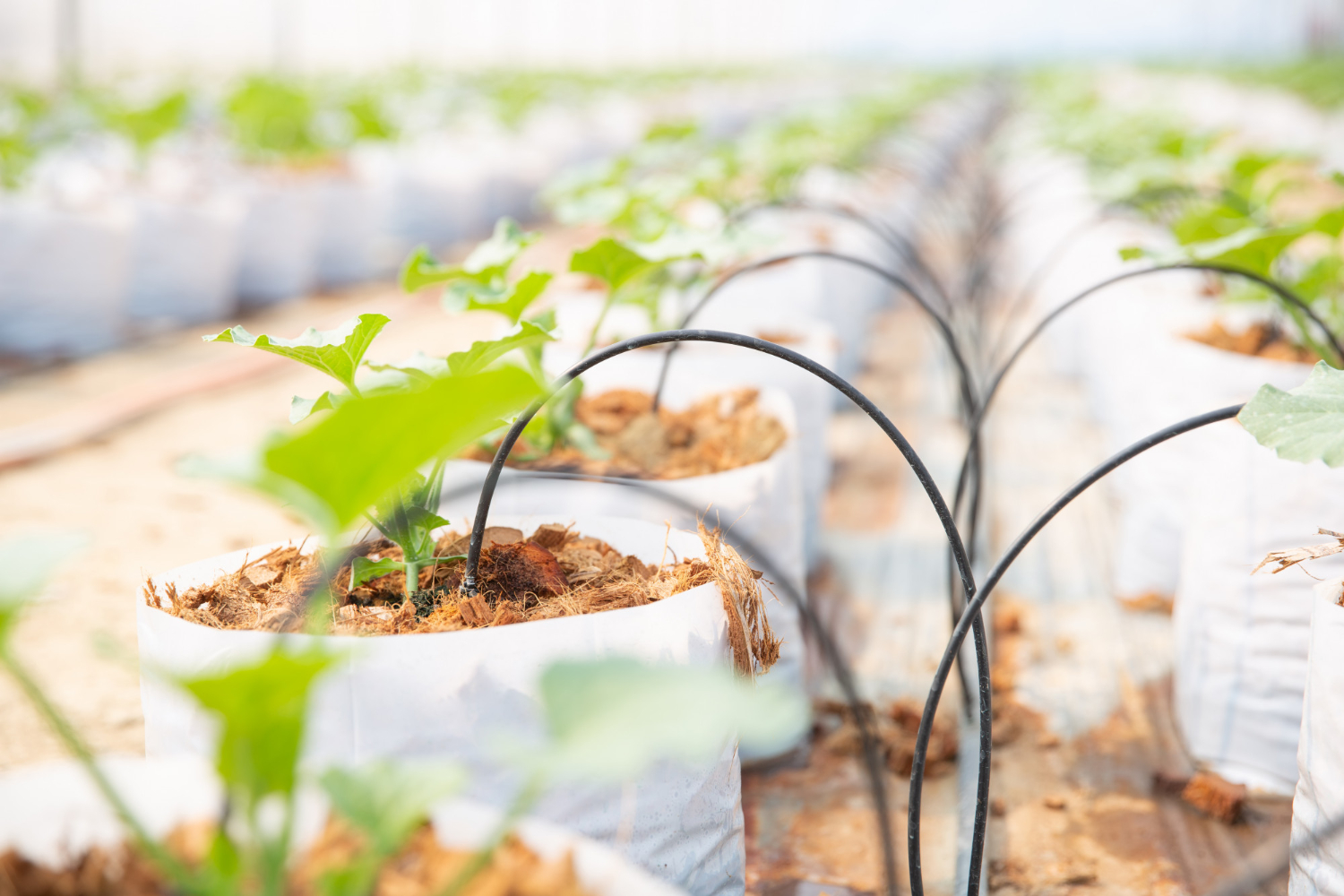The need for efficient and eco-friendly irrigation methods is growing due to the rising concern for environmental sustainability. One such method is drip irrigation, which supplies water directly to the plant’s root zone through emitters. This system not only helps in efficient water use but also offers several environmental benefits.
Eco-Conscious Benefits of Drip Irrigation
Water Conservation for a Greener Planet
One of the significant advantages of drip irrigation is its ability to conserve water. By delivering water directly to the plant’s roots, it minimizes water wastage because of runoff or evaporation. Efficient water distribution ensures that plants receive just the right amount of water for optimal growth without excessive usage. Drip irrigation systems, being low-pressure systems, require less power to operate. Compared to traditional irrigation methods like sprinkler systems, the system can achieve water savings of up to 50%. Specifically, drip irrigation can achieve water savings of up to 70% compared to sprinkler irrigation. This helps reduce the strain on water sources and promotes more sustainable water usage.
Soil Preservation and Erosion Reduction
Drip irrigation contributes to soil preservation by preventing erosion. Since water is supplied directly to the root zone, it minimizes the chances of soil eroding. Slow and steady water flow helps plants by soaking into the ground and keeping it moist. By preventing soil erosion, retaining moisture, and conserving water, this method creates a favorable environment for beneficial organisms to thrive. It maintains a healthy and balanced ecosystem within the soil, fostering biodiversity.
Flourishing Flora: Enhanced Plant Growth
Drip irrigation facilitates the delivery of water and nutrients directly to the plant’s root zone. This targeted approach promotes optimal plant growth and flourishing flora. With a constant water supply and nutrients, plants can continue to grow efficiently, leading to healthy and vibrant vegetation.
Protecting Water Bodies from Fertilizer Runoff
Traditional irrigation methods often result in the runoff of fertilizers, which can contaminate water bodies. Drip irrigation decreases fertilizer runoff by targeting the root zone with water distribution. This ensures the protection of water bodies, promoting a healthier environment for aquatic life.
Reduced Greenhouse Gas Emissions
Drip irrigation, due to its energy efficiency, has a lower output of greenhouse gases compared to other irrigation systems. Specific studies conducted at the UC Agriculture and Natural Resources’ Desert Research and Extension Center found that drip irrigation in alfalfa reduced per-yield soil carbon dioxide emissions by 59% and decreased emissions of other greenhouse gases.
The Green Mechanics of Drip Irrigation Systems
Eco-Engineered Components
Drip irrigation systems are designed with eco-friendly components, such as drip emitters, drip tape, and drip tubing. These components ensure a slow and precise flow rate, minimizing water pressure and preventing wastage. The eco-engineered design of these systems contributes to efficient water and nutrient distribution.
Sustainable Water Distribution Techniques
Drip irrigation efficiently distributes water, benefiting both plants and water conservation efforts. By controlling the water flow directly to the roots, plants receive optimal hydration without excess water, resulting in healthier and more productive crops.
Designing with Nature in Mind
When setting up a drip irrigation system, it is crucial to consider the natural landscape and the specific water needs of the plants. By designing the system to complement the natural environment, it optimizes water usage and ensures an eco-friendly irrigation process. It creates a harmonious connection between the drip system and the surrounding ecosystem.
Green Thumb: Setting Up Your Eco-Friendly Drip System
Eco-Calculations for Water Needs
Before installing a drip irrigation system, it is essential to calculate the water needs of the plants. This ensures that the design is optimized for water conservation while still meeting the vegetation requirements. By understanding the specific water needs, gardeners can effectively utilize drip irrigation for efficient watering.
Selecting Eco-Friendly Equipment
When choosing equipment for a drip irrigation system, opt for eco-friendly options such as water-saving drip emitters and controllers. These components help regulate water flow, ensuring optimal usage and preventing water wastage. By selecting eco-friendly equipment, you can achieve a more sustainable irrigation setup.
Green Practices in Installation and Maintenance
During the installation and maintenance of a drip system, it is essential to adopt green practices. This includes regularly inspecting the system for leaks or clogs and promptly repairing any issues. Properly operating the system helps save water and promotes eco-friendly watering practices.
Mastering Eco-Efficient Watering with Drip Systems
Scheduling for Sustainability
To practice sustainable irrigation, it is crucial to schedule watering sessions effectively. By considering factors such as plant needs, weather conditions, and soil moisture levels, watering can be optimized for efficient usage. This prevents overwatering and reduces the overall water usage.
Eco-Monitoring of Soil Moisture
Regular soil moisture monitoring is vital to ensure informed watering decisions with a drip system. By using moisture sensors or conducting manual tests, gardeners can determine the moisture levels in the soil and adjust watering accordingly. This eco-monitoring approach helps prevent water waste and promotes efficient irrigation.
Balancing Water Distribution for Nature’s Benefit
With drip irrigation, it is possible to balance water distribution according to the needs of different plants and areas of the garden. By customizing the system based on specific requirements, water can be efficiently used for the benefit of nature. This targeted approach maximizes watering efficiency and supports a greener ecosystem.
A Greener Tomorrow
The Green Edge of Drip Irrigation
Drip irrigation provides a green edge regarding water conservation and environmental sustainability. Its efficient water usage, reduced runoff, and soil preservation make it a preferred choice for eco-conscious gardeners and farmers. By adopting drip irrigation systems, we can contribute to a greener tomorrow.
Watering the Future with Sustainable Solutions
Sustainable irrigation practices, such as drip irrigation, are crucial for the future of water management. As the need for efficient water usage continues to grow, implementing eco-friendly solutions becomes imperative.
